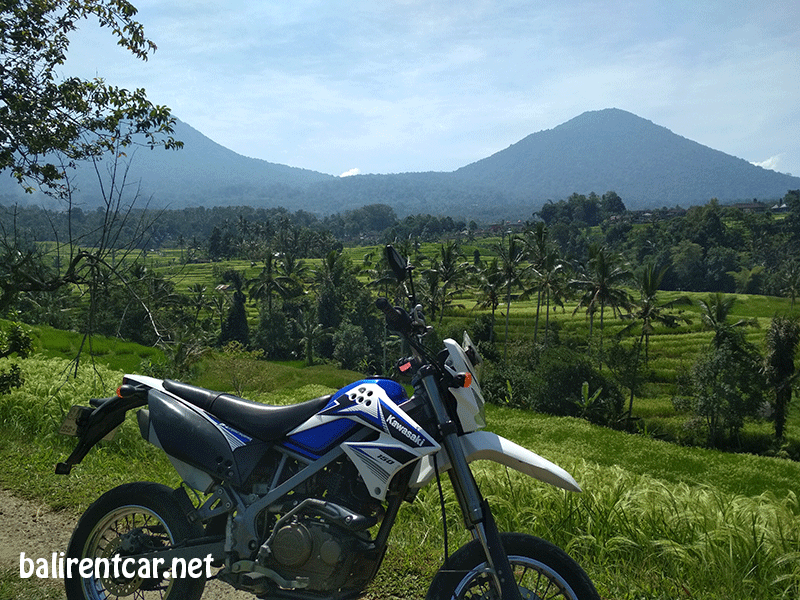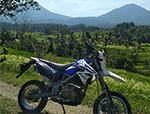Social System in Bali Island
10 February 2011Four social systems bind the Balinese together the clean systems (dadia), the stratification system (kasta), the community system (banjar), and the interest and working group system (seka). The dadia system encompasses the combined extended families and all the ancestors. In this relationship, family members are periodically and together in one place for ceremonies dedicated to the worship of God at the shrine (sanggah or merajan) for the immediate family or at the temple (pura) for the extended family. Besides strengthening the family bond, these ceremonies foster the feeling of devotion to or respect for elders for example, at the ceremony of death (nyumbah), family members eat food that had been offered earlier to their ancestors (nyurud).
The family, ancestors, and community are tightly enmeshed and interdependent. No one, except the wanderer or mentally ill, can function without being part of all there. Every Balinese Hindu is imbued with a sense of this trilateral force from birth and this early structuring of reality, with regular and frequent reinforcement, lasts throughout this life and the lives thereafter.
The divisions of caste, originally of Hindu origin, were based on their function in the community: Brahmana (the highest caste comprising high priests) were responsible for religious ceremonies; Ksatria had roles in the government; Wesia were involved in business and activities involving public welfare; and sudra were farmers who performed tasks for the other castes as well.
There has never been an untouchable or outcast group as in Hindu India. Beginning in the 1920s, some members of the lowest caste, Sudra, objected to the social implications of the caste terminology and changed it to Catur Wangsa (meaning inheritances') or Catur Warna (meaning 'four colours'); they also changed Sudra to Jaba. In Bali, caste is determined by inheritance at birth, but it is no longer significant for an individual's function in society or in an occupation.
Today caste is functional only for social status and inheritance. The priestly roles in ceremonies are carried out not only by the high priest but also by priests from the lower castes; in fact, most priests come from the lowest castes. In practice, many people of the jaba caste regard priests from their caste as having high status, similar to that of the high priests from the Brahmana.
Each community is made up of many groups, each group consisting of individuals who come together for cooperative activities involving specific interests. Such groups are called clubs or sekaha. Each has a specific name according to its activity. There are working groups such as seka manyi for cutting rice and seka numbeg for cultivating; and there are groups that pursue an interest in the arts and even in palm wine drinking such as seka gong gamelan(orchestra), sekaha drama (theatre), seka barong (responsible for the care and dances of the barong), kecak (a dance), and sekaha tuak (palm wine). Young people, e.g. unmarried adolescents, are also members of their own special group called sekaha truna-truni. Equality and cooperation of members are the primary rules of these clubs.

The irrigation groups (subak) (Covarrubias, 1973); presided over by the high priest and the goddess of rice, are made up of representatives from villages affected by the regional irrigation systems. They control the distribution of irrigation water that flows from the mountains to the sea and make decisions about planting crops. These complex networks of streams, canals, and ditches, so essential to life, bind large portions of the Bali Island together. Allocation of water is up to the subak. Villages hold elaborate ceremonies in honor of the rice goddess who protects the rice planting, makes crops flourish, and ensures that rice storage houses in individual homes are full. The last-mentioned custom has recently dropped out since the introduction of new strains of rice which are not suitable for long-term storage, unlike the old traditional rice. Subak may be considered a system of the larger community and an expression of long-standing collaborative action on a grand inter-community scale.
Percapita income is relatively low in Bali, currently averaging less than the equivalent of US$500.00 per year. However, poverty is not evident in the way that it is in other developing countries such as India, Mexico, and certain South American countries. There are very few beggars or homeless people, even in the capital city of Denpasar, and even fewer in the countryside. There are no shanty towns. Even the poorest can afford or manage to obtain clothes, shelter, and food. In some villages, Western-type medical care is marginal. However, public health clinics exist even in remote areas.
Bali Island has no seasons in terms of temperature or planting, only a rainy season from December through March and a dry season. During the rainy season, it usually seems hotter because of higher humidity. In the mountain areas, it rains more than on plains and along the shores. Water is not a problem (except in the desolate western part of Bali Island ). It flows through the rice paddies, and in the streams, rivers, and ditches that run alongside the roads where people still bath themselves and their cows daily. These streams appear dirty from the soil they pick up along the way and sometimes from refuse.
Of course, food is a critical aspect of life in Bali. People of all ages tend to be thin and obesity is very unusual. No one goes hungry because of the low cost of food, the availability of natural fruit, the food served at the frequent festivals, and family sharing. Rice is a staple (two or three times a day), but vegetables, meat (beef, pork, and chicken), and seafood (less in the mountains) are also consumed. The food is spicy and often hot with chopped peppers. Spice Island, a historical name for Indonesia, remains apt.
Each village has its marketplace and some of the larger ones draw people from several villages in the area. One can buy all sorts of food and things; dried fish, live chickens, snacks, refreshments, imported items for homes, kitchen articles, incense, perfume oil from fresh blossoms, thongs, toys, woven mats, and hats. It is a place to meet, socialize, or just while away time in a busy, festive atmosphere.





















